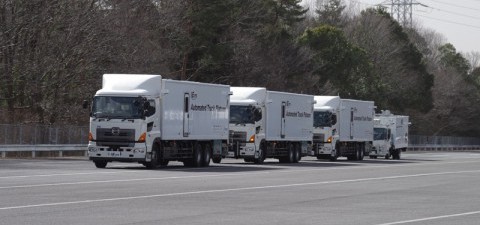Will autonomous vehicles threaten truck driving jobs?
Much of the attention focused on autonomous or self-driving vehicles has centered on testing by companies such as Google, BMW and Lexus for the passenger vehicle market.
However, there is a good argument to be made that autonomous vehicle technology will first affect industry and commerce – and that means the trucking industry.
Trucking involves long-haul movements on major highways and is an industry facing a current driver shortage of 30,000 expected to grow to 250,000 by the year 2022.
Companies such as Wal-Mart and Amazon, moving high volumes of freight, would be likely candidates to shift to autonomous technologies.
“These vehicles could potentially be on the road by the end of the decade,” said Joshua L. Schank, president of the Eno Center for Transportation. “The benefits from autonomous vehicles are substantial, but the barriers also are substantial.”
At a recent House Transportation and Infrastructure subcommittee hearing to discuss autonomous vehicles, Michigan DOT Director Kirk Steudle, speaking for AASHTO, summed up the aims and objectives of the autonomous vehicle program.
Steudle said the ultimate goal of the technology should remain delivering the “safest and most efficient transportation system imaginable, and it may be possible to achieve this goal with accident-free vehicles, vehicles that can drive themselves.”
Steudle added that that acceptance and use of the autonomous vehicle technology would be “challenging and evolutionary,” prompting many years of further research, development, and testing. Finally, he said, the government and the automotive industry have tasks to complete today in order to move forward with driverless vehicle technology in the future.
Steudle said encouraging NHTSA to make its decision on requiring connected vehicle technology for passenger vehicles; protecting the 5.9 GHz bandwidth for the connected vehicle program; funding research to better understand all operating scenarios associated with the technology; and supporting cooperation between state transportation departments, the U.S. Department of Transportation, and global automakers are issues needing action now.
Subcommittee Chair Tom Petri (R-WI) kicked off the hearing by expressing his hope for the new technology.
“Vehicles and the infrastructure they utilize are becoming increasingly integrated with computer technology which has the potential to revolutionize highway safety and mobility in America,” Petri said. “In order to see these benefits come to fruition, federal and state officials should begin planning for the benefits and challenges that autonomous vehicles will bring to the future of our nation’s surface transportation system,” he added.
The industry, however, is not waiting for the government. Caterpillar is already using autonomous trucks in Western Australia’s Fortescue Solomon mining operation.
“Fortescue’s Solomon mine is the first project of its kind for Caterpillar,” said Hans Haefeli, Caterpillar vice president for Advanced Components & Systems Division. “Utilizing the entire Cat MineStar System suite of surface mining technologies, both autonomous and manned machines are producing iron ore from two mines at Solomon. The depth and breadth of the Cat precision technology, coupled with skilled control personnel, is designed to enable the dual fleet to work safely and efficiently and to reach production goals quickly.”
“At full operations, Solomon will have a workforce of about 1,200 people. Autonomous haulage will provide a highly efficient, productive and safe environment that complements manned operations. It also provides new opportunities for people with different skill sets and enhances safety through reduced interaction between heavy equipment and people in mining areas utilizing collision avoidance technology,” said Fortescue Chief Executive Officer Nev Power.
Ted Scott, director of engineering for the American Trucking Associations, thinks that safety features like automatic braking will gradually roll out to the country’s trucks over the next decade, but they will be quickly superseded by fully autonomous trucks after that.
“Connected vehicles are a potential phase-in for autonomous vehicles,” he said. “It won’t last long, in my mind.”
The potential technology advancements could mean a sea change for truck drivers in the future. Instead of spending time behind the wheel or at a distant rest stop, the driver of the future might be a technician at a desk operating more than one vehicle at a time.
“It’s like how we’re beginning to see new types of fighter pilots operating drones, deep in the desert,” said Scott.
Scott said the coming changes will affect drivers down the road.
“Whether it’s retraining or not, I don’t know,” said Scott. “This thing is not going to occur overnight. There may be time enough to bring people into the system that have never really driven a truck before.”






